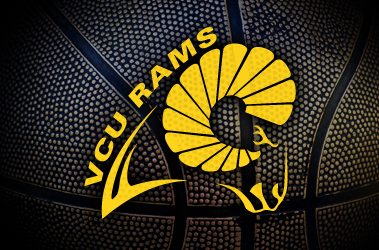The finer details of VCU’s big move
On Monday afternoon at 1:30pm, VCU President Michael Rao took the podium at the Stuart C. Siegel Center to announce “Virginia Commonwealth University will join the Atlantic 10 in all sports effective July 1st, 2012.”

On Monday afternoon at 1:30pm, VCU President Michael Rao took the podium at the Stuart C. Siegel Center to announce that “Virginia Commonwealth University will join the Atlantic 10 in all sports effective July 1st, 2012.”
Rumor mill
The initial rumor was broken by Lenn Robbins of the New York Post via twitter on April 20th. According to Robbins VCU, George Mason and potentially Butler would all announce their moves to the A-10 on May 1st. On May 2nd Butler announced it would join the A-10 in 2013 in all sports while the Rams and Patriots remained silent. The rumor mill continued to spin. On May 11th the CAA community breathed a collective sigh of relief as GMU announced it would remain in the CAA. Finally rumors broke on Monday May 14th that VCU would join the A-10 in 2013. In college sports, sometimes the truth isn’t fully revealed until a university just comes out and says it.
The cost of doing business
In Division I athletics, the cost of doing business isn’t cheap. VCU will have to pay a $250,000 CAA exit fee and a $700,000 Atlantic 10 entrance fee upfront for the move. With schools like St. Louis and Rhode Island, the increased geographic footprint of the Atlantic 10 will also amount to an additional $150,000 worth of travel expenses annually. VCU must also cope with losing $5 million worth of revenue from the NCAA tournament. “Tournament units” of $250,000 each reside in the conference for six years, so the CAA will pocket all $5 million. President Rao remained positive by saying, “the expected returns are much greater than the short term losses.”
VCU is optimistic about the A-10’s revenue sharing of 75%-25% with the institutions keeping 75%. When President Rao was asked whether the revenue sharing ratchets up pressure to win he responded, “Absolutely, and we wouldn’t want it any other way.”
On the court
As a basketball conference the A-10 is significantly better than the CAA. The A-10 boasts 20 at-large bids to the NCAA tournament since 2000 to the CAA’s four. In 2012 the conference had seven teams finish with a top-100 RPI including Temple (22), St. Louis (28), and Xavier (38) while the CAA only boasted three teams. VCU led the CAA at #34 while Drexel (66) and George Mason (84) failed to make the NCAA Tournament.
The 14-member Atlantic 10 is also much stronger at the bottom of the conference than the 12-member CAA. The A-10’s bottom three of George Washington (177), Rhode Island (254), and Fordham (234) are significantly better than the CAA’s bottom three of William & Mary (293), Hofstra (261) and Towson (307). Last season Towson set the NCAA record for consecutive losses. After VCU-Towson games, the Rams would dramatically fall in the rankings even though they beating Tigers by double digits.
Why so fast?
Despite announcing the change later than Butler, VCU opted to make the leap a year earlier than the Bulldogs. The CAA has a history of banning teams from post-season tournaments in their final seasons. At-large bids in the CAA are hard to come by and without an automatic bid to the NCAA tournament, VCU could have been in trouble come March 2013. With the quick move VCU can maintain momentum, immediately recruit at a higher level and avoid a “lame duck” season.
The CAA’s future
Despite being loaded with cash and having four very talented basketball teams in Drexel, Delaware, ODU, and GMU, the CAA finds itself in serious trouble. With VCU moving to the A-10 in 2012, GSU going to the Sunbelt in 2013, and a potential move by ODU to Conference USA, the CAA needs members. The CAA can weather the storm but it needs to retain teams like GMU and Drexel who might be uncomfortable with the conference’s strongest members disappearing. To add to the trouble, UNCW and Towson could face consequences because of low APR scores (including postseason bans) and the CAA was excluded from the 2013 ESPN Bracketbusters. If ODU bolts, the 2013 CAA tournament could potentially only have seven teams.
VCU’s future
Only time will tell if VCU can maintain its success in a much stronger conference. The spirit of the move is inspiring, and it fits the overall upward theme of VCU as a rapidly expanding and rising major research university. Whatever happens, the 2012-2013 season will deliver as one of the more important and interesting seasons in the history of VCU basketball.
To stay up to date on all things VCU Basketball related, follow @rvaRAMnews on twitter or facebook.
— ∮∮∮ —
Related
- More on 2012’s conference realignment
- Read what people are saying on the A10 Talk forums; A10talk.com
-
Recommend this
on Facebook -

Report an error
-

Subscribe to our
Weekly Digest





Notice: Comments that are not conducive to an interesting and thoughtful conversation may be removed at the editor’s discretion.